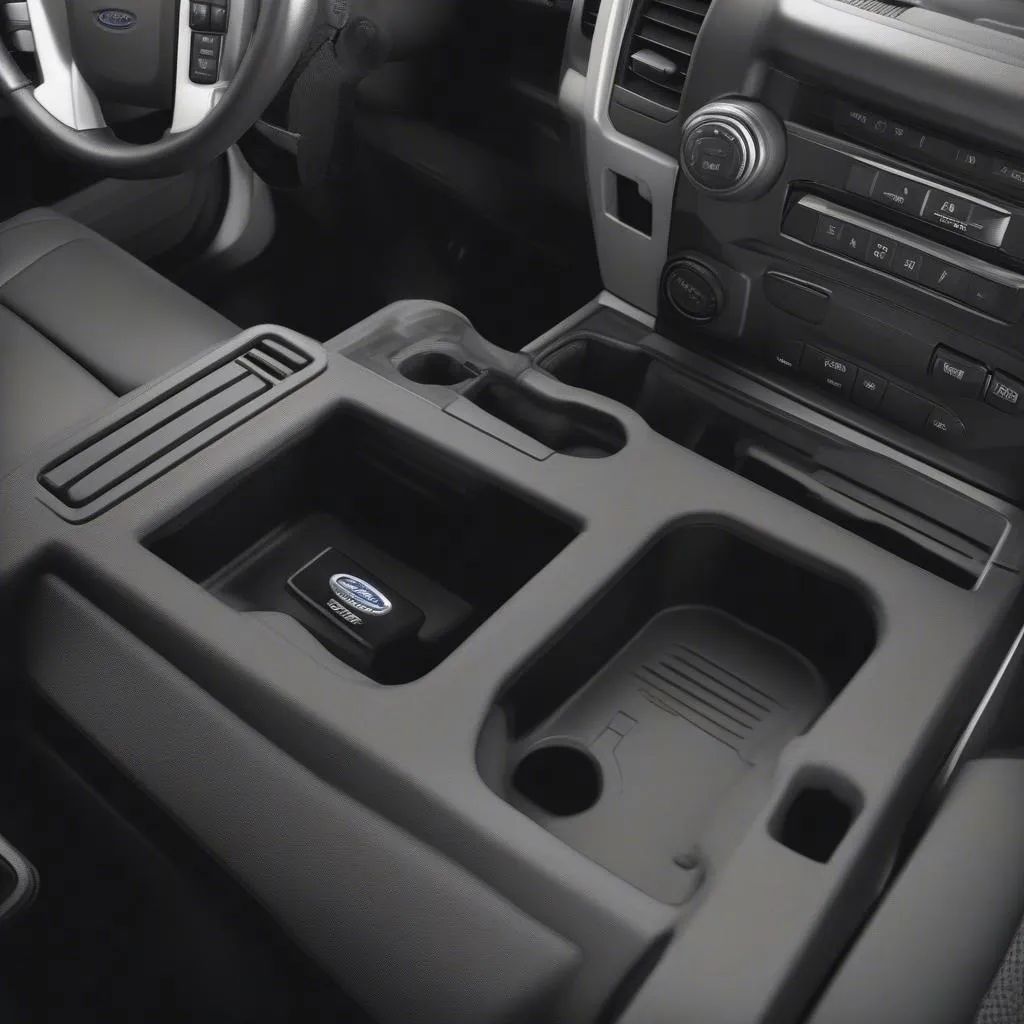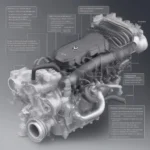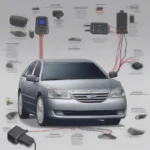If your 2014 Ford F-150’s OBD2 scanner displays a “catalyst not ready” message, you’re not alone. This common issue can stem from various factors and often causes confusion among vehicle owners. This comprehensive guide will delve into the reasons behind this message, explore possible solutions, and equip you with the knowledge to address it effectively.
Deciphering the “Catalyst Not Ready” Message
The catalytic converter plays a crucial role in your Ford F-150’s emissions system. It converts harmful pollutants in exhaust gases into less harmful substances before releasing them into the atmosphere. The OBD2 system continuously monitors the catalytic converter’s efficiency. When it detects that the catalyst is not operating within its optimal range, it triggers the “catalyst not ready” message.
This message doesn’t necessarily indicate a faulty catalytic converter. It simply signifies that the OBD2 system hasn’t gathered enough data to determine if the catalyst is functioning correctly.
Common Causes of a “Catalyst Not Ready” Status
Several factors can contribute to a “catalyst not ready” status in your 2014 Ford F-150:
- Recent Battery Disconnection or Replacement: Disconnecting or replacing the battery resets the OBD2 system’s memory, including the data related to the catalytic converter.
- Incomplete Drive Cycle: The OBD2 system requires a complete drive cycle to gather sufficient data about the catalytic converter’s performance. A drive cycle involves specific driving conditions and durations to ensure all components are evaluated.
- Faulty Oxygen Sensors: Oxygen sensors play a vital role in monitoring the exhaust gases and providing feedback to the OBD2 system. Malfunctioning oxygen sensors can disrupt the data flow and trigger the “catalyst not ready” message.
- Loose Gas Cap: A loose or damaged gas cap can cause fuel vapor leaks, affecting the emissions system and potentially delaying the catalytic converter’s readiness.
- Catalytic Converter Issues: While not the most common cause, a failing or damaged catalytic converter can directly trigger the “catalyst not ready” message.
Addressing the “Catalyst Not Ready” Message
Before assuming the worst, try these troubleshooting steps:
- Ensure Proper Gas Cap Installation: Check your gas cap to ensure it’s securely tightened.
- Complete a Drive Cycle: Perform a complete drive cycle, which typically involves a mix of city and highway driving with varying speeds and idling periods. Consult your owner’s manual or search online for the specific drive cycle requirements for your 2014 Ford F-150 model.
- Check for Other Diagnostic Trouble Codes (DTCs): If the “catalyst not ready” message persists after a drive cycle, use an OBD2 scanner to check for any other DTCs. Address those codes first, as they might be indirectly affecting the catalytic converter’s readiness.
When to Seek Professional Help
If the issue persists despite trying the above steps, it’s advisable to consult a qualified mechanic or dealership. They have the expertise and equipment to diagnose the problem accurately. A professional inspection can help determine if any components require repair or replacement.
“When dealing with emissions-related issues, it’s always best to err on the side of caution,” advises John Miller, a seasoned automotive technician with over 20 years of experience. “Ignoring warning signs like a ‘catalyst not ready’ message can lead to more significant problems and costlier repairs down the line.”
Conclusion
Encountering a “2014 Ford F-150 OBD2 shows cat not ready” message can be concerning, but it doesn’t always signify a major issue. By understanding the potential causes and following the suggested troubleshooting steps, you can often resolve the problem without significant hassle. However, if the message persists, seeking professional help is crucial to ensure your vehicle’s emissions system is functioning correctly.
Remember, a well-maintained vehicle not only performs better but also contributes to a cleaner environment.


